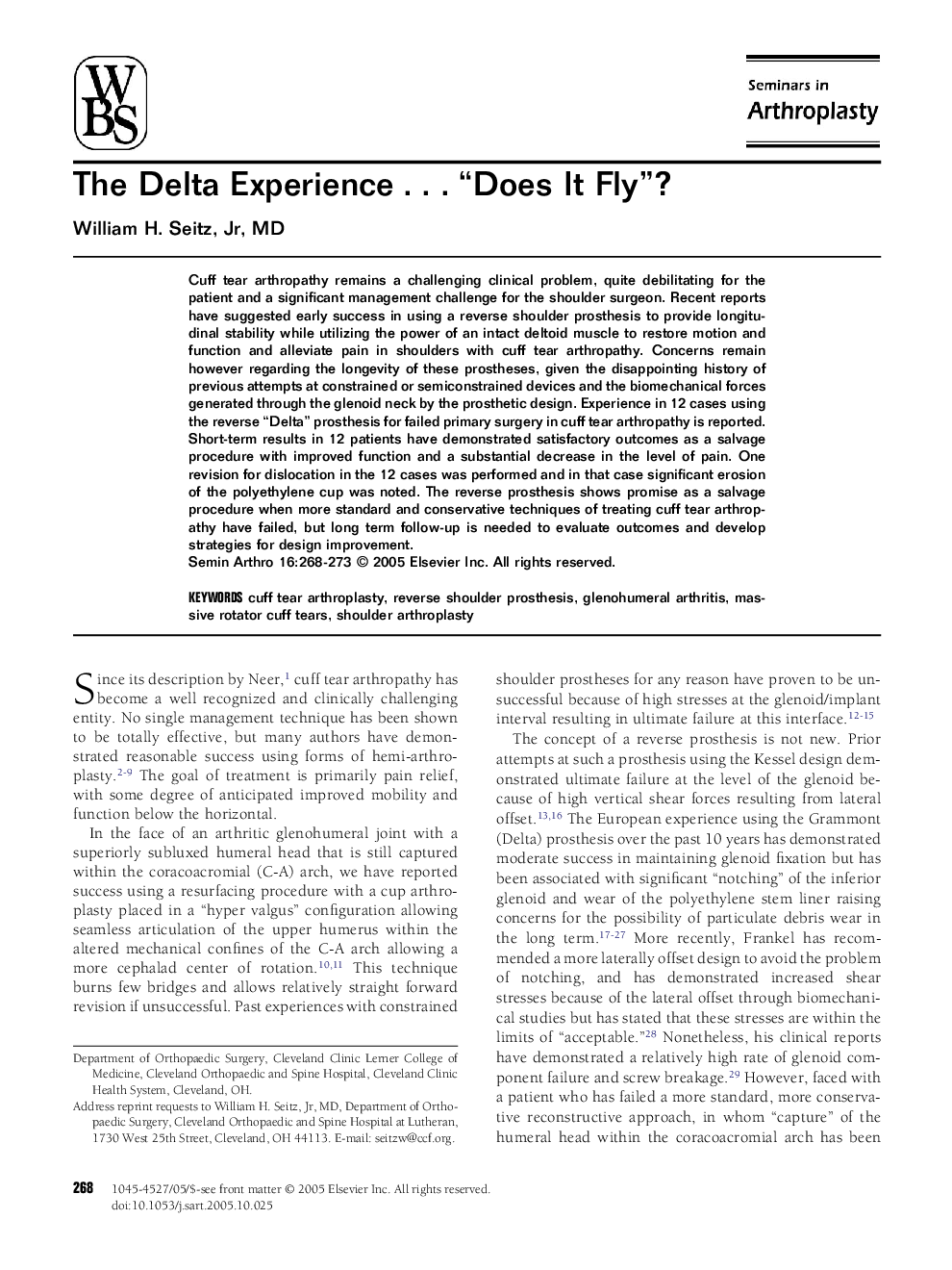| Article ID | Journal | Published Year | Pages | File Type |
|---|---|---|---|---|
| 9359378 | Seminars in Arthroplasty | 2005 | 6 Pages |
Abstract
Cuff tear arthropathy remains a challenging clinical problem, quite debilitating for the patient and a significant management challenge for the shoulder surgeon. Recent reports have suggested early success in using a reverse shoulder prosthesis to provide longitudinal stability while utilizing the power of an intact deltoid muscle to restore motion and function and alleviate pain in shoulders with cuff tear arthropathy. Concerns remain however regarding the longevity of these prostheses, given the disappointing history of previous attempts at constrained or semiconstrained devices and the biomechanical forces generated through the glenoid neck by the prosthetic design. Experience in 12 cases using the reverse “Delta” prosthesis for failed primary surgery in cuff tear arthropathy is reported. Short-term results in 12 patients have demonstrated satisfactory outcomes as a salvage procedure with improved function and a substantial decrease in the level of pain. One revision for dislocation in the 12 cases was performed and in that case significant erosion of the polyethylene cup was noted. The reverse prosthesis shows promise as a salvage procedure when more standard and conservative techniques of treating cuff tear arthropathy have failed, but long term follow-up is needed to evaluate outcomes and develop strategies for design improvement.
Keywords
Related Topics
Health Sciences
Medicine and Dentistry
Orthopedics, Sports Medicine and Rehabilitation
Authors
William H. MD,
